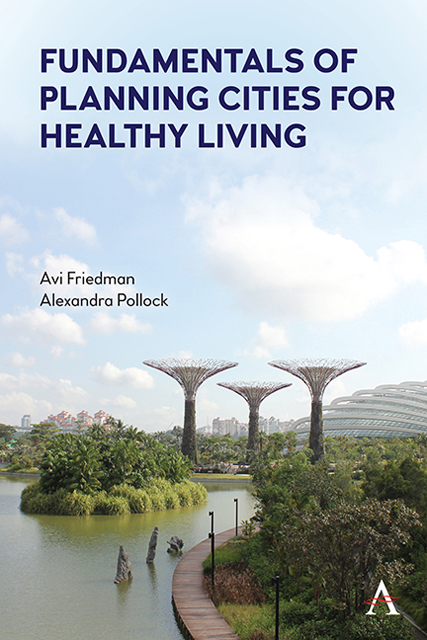Book contents
- Frontmatter
- Contents
- Preface
- Acknowledgments
- Chapter 1 The Broad View
- Chapter 2 Form, Function, and Public Health
- Chapter 3 Planning for Active Mobility
- Chapter 4 Green Open Spaces
- Chapter 5 Active Life in Winter Cities
- Chapter 6 Socializing in Communities
- Chapter 7 Food Production and Distribution
- Chapter 8 Urban Design for Healthy Aging
- Chapter 9 Public and Multi-Unit Residential Buildings and Public Health
- Chapter 10 Healthy Residences
- Chapter 11 Equitable Health Promotion
- Bibliography
- Bibliography for Case Studies
- Illustrations’ Credits
- Index
Chapter 7 - Food Production and Distribution
Published online by Cambridge University Press: 10 January 2023
- Frontmatter
- Contents
- Preface
- Acknowledgments
- Chapter 1 The Broad View
- Chapter 2 Form, Function, and Public Health
- Chapter 3 Planning for Active Mobility
- Chapter 4 Green Open Spaces
- Chapter 5 Active Life in Winter Cities
- Chapter 6 Socializing in Communities
- Chapter 7 Food Production and Distribution
- Chapter 8 Urban Design for Healthy Aging
- Chapter 9 Public and Multi-Unit Residential Buildings and Public Health
- Chapter 10 Healthy Residences
- Chapter 11 Equitable Health Promotion
- Bibliography
- Bibliography for Case Studies
- Illustrations’ Credits
- Index
Summary
People’s ability to follow the World Health Organization recommendations (2021) about healthy eating often depends on where they live. Living in proximity to grocery stores with fresh produce is a key public health determinant (Good and Healthy South Dakota 2015). Unfortunately, urbanization and inequality have made it increasingly expensive and unsustainable for healthy food to reach stores in many urban centers (Stage et al. 2010). To make healthy eating more accessible, the built environment must be reconfigured to include methods of local food production and distribution. This chapter details how the built environment affects people’s access to fresh food and proposes interventions that make nutritious food widely available. The chapter concludes with a description of an urban agriculture (UA) project in the heart of Detroit, USA.
7.1 Health and Diet
Long commutes, high-stress jobs, and an abundance of convenient and fast-food options make it difficult to find time and motivation to cook healthy meals at home (Okrent and Kumcu 2016). There are also cost barriers that prevent lower income populations from consuming fruits and vegetables and instead buying more high caloric food (French et al. 2019). The dietary habits of many people consist of over-consuming low-nutrient food that originates halfway across the globe (Good and Healthy South Dakota 2015). According to Abraham et al. (2018), when people are overly busy or under a financial strain, they prioritize convenience and affordability over nutrition. For example, a 2019 study showed that diets in the United States improved in the past two decades, signaling that American’s tastes and preferences are changing to favor healthier options (LaMotte 2019). However, nutritious options still remain unavailable to many, mostly lower income households (Good and Healthy South Dakota 2015). The authors argue that as people become more motivated to make nutritious choices, the built environment should be modified to assist them to do so.
Illnesses associated with poor diets such as diabetes, which is often linked to obesity, were found to contribute to COVID-19 mortality (Tartof et al. 2020). Severely limited access to high-quality food is characterized by two extremes: food deserts and food swamps.
- Type
- Chapter
- Information
- Fundamentals of Planning Cities for Healthy Living , pp. 83 - 94Publisher: Anthem PressPrint publication year: 2022

